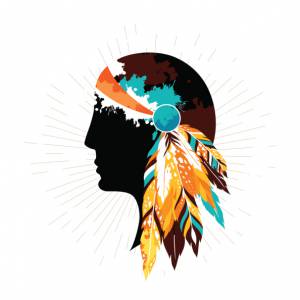Canadian Cree Contestant Wins Mrs. Universe Title
August 29, 2015, was a historic date for the Cree First Nations People. It is the day one of their own, Ashley Callingbull Burnham, was crowned Mrs. Universe. The contest was held this year in Minsk, Belarus. Burnham is the only Canadian and first First Nations participant to ever win the pageant. Her victory may help bring attention to some of the problems indigenous people face including the tragedy of missing and murdered aboriginal women.
Quick Facts on Mrs. Universe 2015 Ashley Callingbull Burnham
- 25 years old
- Actress and model who starred in APTN TV show Blackstone
- Grew up on a reservation near Edmonton in poverty
- Taught performing arts to Cree students
- Experienced physical and sexual abuse at the hands of her stepfather when she was young
- Named second runner-up in the 2010 Miss Universe Canada contest
- Married in February 2015 and began competing in Mrs. Universe pageant
- Wore traditional beaded powwow jingle dress to pageant’s national outfit parade
- Wore buckskin dress by aboriginal designer Lyn Kay Designs for pageant’s talent competition
Who Are the Cree?
The Cree are Native Canadians and Native Americans, and are the one of the biggest tribes in North America.
- Canadian Cree
- Approximately 220,000 members including roughly 38,000 who reside in Quebec
- Live mostly in Alberta, Manitoba, Northwest Territories and Saskatchewan
- Largely, the number of Cree is often attributed to their belief in intertribal marriage
- American Cree
- Reside primarily in Montana on Rocky Boy, Fort Peck or Fort Belknap Indian Reservations
- Language
Numerous Cree speak English and French. There is a Cree language as well. It is similar to the one spoken by the Algonquin tribe, and is the most popular Canadian aboriginal dialect. The Northwest Territories is the only place where the language is officially recognized. In the Encyclopedia of the World’s Endangered Languages Cree is named as “one of fifty five languages that have more than 1,000 speakers which are being actively acquired by children.” Cree may also refer to themselves by one of the following names: nēhiyawak, nīhithaw and nēhilaw
Religious Beliefs
The religious beliefs of the Cree vary. Depending on their upbringing, they may be practicing Catholics, and there are Catholic missionaries serving Cree/First Nations communities. Some Cree are also Anglicans and Pentecostals.
The Cree and other Native Canadians/Native Americans have been historically hesitant to share tribal (non-Christian) religious beliefs and practices with outsiders. However, over time more information on this topic has become available.
- Animism
The traditional beliefs of the Cree are largely based on animism. Animism is the view that animals and inanimate objects, and even natural elements such as wind, thunder and shadows, have spiritual powers (called manitowak). Due to their faith that everyone and everything has spirits, the Cree don’t believe in supernatural forces.
- Good vs. Evil
The Cree recognize a Great Spirit named misimanito and an Evil Spirit called macimanito.
- Hierarchy
While elders are typically regarded as the most knowledgeable members of the tribe on religious matters, there are also other men and women who have some religious authority. However, there is no true hierarchy and the Cree do not have priests or shamans.
- Ceremonies
Historically, the Cree didn’t have traditional religious ceremonies, but there were certain occasions that were clearly more significant than others. Over time, some tribes have incorporated more Christian rituals in some of their practices.
The Cree are known for “tea ceremonies” which occurred in fall and spring, and were celebrations of Thanksgiving. They have also held feasts and dances when tribe members had fruitful hunts. Weddings are four day events, and include singing, dancing and other festivities.
The new Mrs. Universe comes from a proud line of Native Canadians who have high hopes she will use her title for the good of the world and her people.


